Royal Doulton
Showing 1–12 of 23 results
-
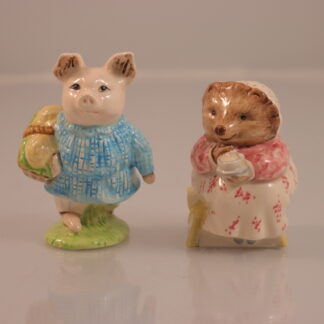
1989 & 2002 Beatrix Potter Figurines “Mrs Tiggy Winkle Takes Tea” & “Little Pig Robinson”
By Royal Doulton & John Beswick
$210.00 More InfoAdd to cart -

Vintage/Antique Rare Pottery Jug Of Queen Victoria With Written Scroll Pattern ‘She Wrought Her People’ ‘Lasting Good’
By Royal Doulton Lambeth
$350.00 More InfoAdd to cart -
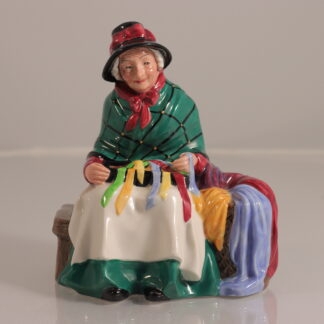
Vintage Character figurine ‘Silks And Ribbons’ HN 2017
By Royal Doulton
$220.00 More InfoAdd to cart -
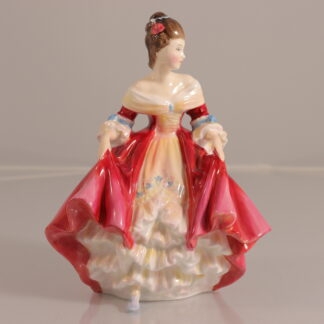
Vintage “Southern Belle” H.N 2229 1957 Figurine Made In England
By Royal Doulton
$220.00 More InfoAdd to cart -
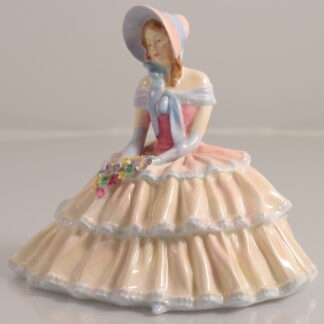
Vintage Character/figurine ‘Day Dreams’
By Royal Doulton
$315.00 More InfoAdd to cart -
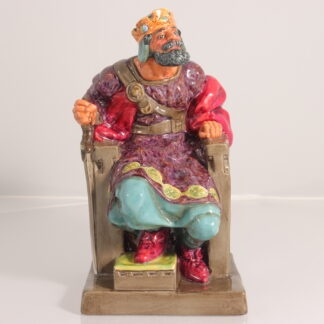
“The Old King” HN.2134 Signed TB Marked RP HN. 2134
By Royal Doulton
$710.00 More InfoAdd to cart -
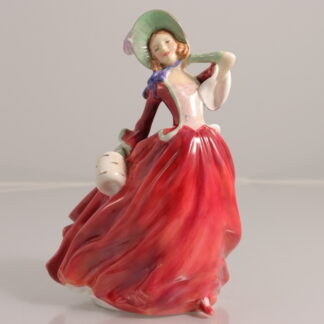
Vintage Character/ figurine ‘Autumn Breezes’ RaNo 835666
By Royal Doulton
$210.00 More InfoAdd to cart -
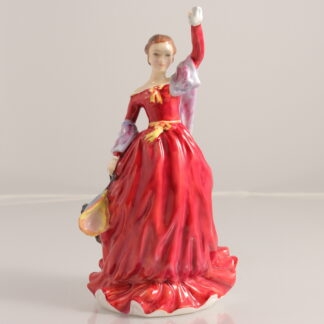
1996 Lady Figurine “Fond Farewell”
Modelled By Alan Maslankowski - Royal Doulton
$210.00 More InfoAdd to cart -

1983 Royal Doulton Lady Figurine Springtime Collector Club Edition
By Royal Doulton
$190.00 More InfoAdd to cart -

1930-1949 “Paisley Shawl” Lady Figurine
Moulded By Leslie Harradine Royal Doulton
$340.00 More InfoAdd to cart -
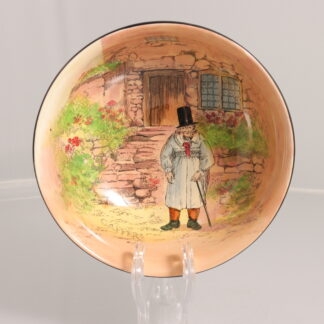
Vintage Noke ‘Gaffers’ Footed Large Salad Bowl D4210 with a gaffer standing at the bottom of his cottage steps
By Royal Doulton
$235.00 More InfoAdd to cart -

Vintage John Barleycorn Character Jug D5327 Limited edition to 7,500
By Royal Doulton
$160.00 More InfoAdd to cart
Showing 1–12 of 23 results
Royal Doulton Bio / Information
Royal Doulton, established in 1815, is a prominent English ceramic manufacturing company. Originating in Vauxhall, London, the company later relocated to Lambeth in 1882. Initially founded as a partnership between John Doulton, Martha Jones, and John Watts, the business began under the name Jones Watts & Doulton in 1815. After Martha Jones left the partnership in 1820, the trade name changed to Doulton & Watts.
Specializing in salt glaze stoneware, the company crafted utilitarian and decorative items like bottles, jugs, and jars for inns and pubs. The expansion continued with the acquisition of a larger pottery on Lambeth High Street in 1826. The company transitioned to Doulton & Co in 1854, following the retirement of John Watts and a merger with Henry Doulton and Co. Although the trading name Doulton & Watts persisted for decades.
During the 19th century, the sons of John Doulton managed three different businesses, with over 4,000 employees by 1897. The manufacture of circular ceramic sewage pipes, initiated in 1846, was a notable success, addressing sanitation issues during the 1846–1860 cholera pandemic. The company expanded its offerings to include metal plumbing items, kitchen stoneware, and laboratory ceramics.
In the 1860s, Henry Doulton shifted focus to more artistic wares, deviating from utilitarian ceramics. The Lambeth studio, established in 1871, attracted designers and artists like George Tinworth, the Barlow family, Frank Butler, Mark Marshall, and Eliza Simmance. The company faced initial challenges in producing art pieces but experienced significant success in their exhibition pieces during the period 1870-1900.
In 1882, Doulton acquired Pinder Bourne & Co in Burslem, Staffordshire, marking its entry into The Potteries region. Architectural terracotta, became a significant venture. The Lambeth studio continued creating studio pottery, while Burslem focused on bone china tableware and figures.
In 1901, King Edward VII awarded the Burslem factory the Royal Warrant, leading to the adoption of the name Royal Doulton. Throughout the 20th century, the company expanded its product range, shifting from stoneware to high-quality bone china. Figurines gained importance, with notable designs in the Art Deco style.
Doulton’s history includes the acquisition of Beswick Pottery in 1969 and subsequent ownership changes. The Lambeth factory closed in 1956, and the Burslem factory closed in 2005. The company went through various mergers, with Waterford Wedgwood acquiring Royal Doulton in 2005. In 2015, Fiskars Corporation acquired WWRD Holdings Limited, encompassing Royal Doulton among other brands. Today, Royal Doulton operates as part of WWRD Holdings Limited, with some production carried out in Indonesia. The company has a rich legacy with notable designers like Hannah and Florence Barlow, Leslie Harradine, Agnete Hoy, and Charles Noke.
You can read more on Royal Doulton On Wikipedia
Kingsware Info
Kingsware was developed by Charles Noke and produced between 1898 and 1939. No other factory in the world has been able to recreate the same lustrous finish. The rich, brown effects of the Kingsware glaze were achieved by painting the design in coloured slip (liquid Clay) on the inside of the plaster mould, then the dark terra-cotta slip was then poured into the moulds and fused with the coloured slip this created the design in relief of rich colour that occur with the fusing of the slips from a dark treacle brown to a greenish colour. The white lettering was slip-trailed by hand In the Kingsware range you can find a variety of unique items including whisky decanters, loving cups, match strikers, water jugs and tobacco jars.
Charles Noke
Renowned for diverse pottery ranges and techniques, Noke played a pivotal role in establishing Doulton as a global leader. Joining in 1889, he became Art Director, revolutionizing design and production. His notable achievements include experimental glazed wares like Flambes, Titanian, Sung, and Chinese Jade, elevating British studio pottery.
Famous for launching HN figurines, named after Harry Nixon, he contributed iconic character studies like The Jester, The Potter, and The Cobbler. Noke’s career began at Royal Worcester, and in 1889, he joined Doulton as Chief Designer, and convincing Henry Doulton he could create figurines that would sell. The first experimental figure models were shown at the Chicago World Fair in 1893. Noke created the HN series of figurines from 1909, the Darling series (formerly Bedtime) introduced in 1913, endorsed by Queen Mary.
Noke’s legacy includes Flambe Ware’s striking red finish, Kings Ware’s rich brown glaze (1901-1939), and Series Ware’s themed ceramic items. His Character Jugs, distinct from traditional Toby Jugs, debuted in 1934 with John Barleycorn. Serving as Art Director until 1936, Noke continued at Doulton until his death in 1941 age 78.
Read More On Charles Noke On Wikipedia
Maud Bowden
Maud Bowden, a distinguished Doulton ceramic artist, began her career in 1903 amidst the transition from elaborate High Victorian designs to simpler tube-lined ones. Her tenure extended until 1937, witnessing the conclusion of the Art Nouveau and Art Deco periods. She stands out among the many long-serving artists, recognized for her excellence in the craft.
Leslie Harradine (1887–1965)
Leslie emerged as a distinguished figurine modeller for Royal Doulton, spanning from 1920 to the mid-1950s.
Born Arthur Leslie Harradine in Lambeth in 1887, he apprenticed at the Doulton Lambeth studio in 1902 under George Tinworth while studying at the Camberwell School of Arts. His passion for clay sculpture led him to create prototypes noticed by Charles Noke, the art director of Royal Doulton in Burslem.
In 1912, Leslie migrated to Canada with his brother Percy, buying land to farm. After World War I service, Leslie married Edith Denton in 1917, settling in Luton, Bedfordshire, where he dreamed of owning a studio in London.
Freelancing for Royal Doulton and Later Years:
Harradine declined an offer from Charles Noke to work for Royal Doulton but sent freelance model samples, leading to the release of his first figure, ‘Contentment’, in 1920. For nearly forty years, Harradine freelanced for Doulton, creating popular models like “Polly Peacham” and “The Bather”.
Personal Life and Legacy:
After his first wife’s death in 1935, Leslie remarried (and later married again) and eventually moved to Sark. He continued modelling until the late 1950s when he retired and moved to Spain. He passed away in 1965 in Gibraltar, leaving behind a legacy of iconic figurines and sculptures.
